By: Kevin McCabe, MSc, Director of Pricing Strategy & Greg Thomas, Vice President of Pricing Research and Insights


Historically, professional associations have played a critical role in supporting, educating, and connecting their members. With many aging members entering retirement, most associations have struggled to engage younger professionals, a problem that has caused declining membership. While most associations do earn revenue from publications, courses and conferences, membership numbers are the priority.
A continuing decline in association membership year-over-year is apparent across fields like healthcare and science, and has been compounded by today’s virtual, COVID-19 world. In fact, many potential and current members are challenging the future of professional associations altogether. Sub-specialty alternatives to the broad field association networks are adding to the challenge of how professionals should spend their membership dollars. The relevancy of professional associations is being challenged with online networking groups like LinkedIn; instant online availability and access to industry research, resources, and news; and competition through niched online education and training. In-person conferences and events have been the saving grace for many and a main driver of new membership. Now that COVID-19 has forced conferences and events into the digital sphere, associations face another serious setback, and many are wondering how they can stay relevant, add value, increase event attendance, and grow membership.
An Uphill Battle
Most associations have not paid enough attention to marketing and pricing practices. “Other than some price point tweaks and discounting, the pricing and segmentation practices of associations has not changed in decades and, with COVID-19, are wildly out of touch with value,” Greg Thomas, Vice President of Pricing Research and Insights at Iris Pricing Solutions, suggests. Many younger professionals view associations as outdated, elitist, and unnecessary, especially when there are online groups that offer many of the same benefits for free.
Now, with COVID-19, planned in-person events have been forced to go virtual and many associations are left without a clear strategy or way forward. While virtual events can still deliver industry knowledge through online training and keynote speakers, the core value of networking, meeting with peers socially and the travel and camaraderie that entices professionals to attend conferences and in-person events, is proving difficult to replicate.
Showcasing Value
Amid today’s global pandemic there are no easy solutions to the challenges that associations face. One thing is obvious though; for associations to regain their relevancy and increase membership they must be clear about the value they provide and then showcase that value to existing and potential members. Most associations are surprised when the data uncovers that they are offering too much to members. What is surprising to our clients is that they need to simplify their offerings and add choice.
Based on our extensive research and discussions with several associations and specific member-based focus groups, associations do still provide value to members, the main revelation is that value is changing. For example, many associations feel that their advocacy role is a core value. We point out that professionals don’t have to be a member to get that benefit, so while advocacy is important to the industry, it’s risky as the basis of your fees except to the most engaged members.
Value Changes Depending on the Lifecycle of a Member’s Career
Most professional association members engage with an association differently depending on where they are in their careers. What is interesting with non-members and members alike is that needs change and what they choose as important and their level of engagement will depend on their career life cycle. A student’s needs are very different than someone who is mid-career or at the end of their career. So, by having different, customized offers you get people options to renew for what they need without leaving the association.
careers. What is interesting with non-members and members alike is that needs change and what they choose as important and their level of engagement will depend on their career life cycle. A student’s needs are very different than someone who is mid-career or at the end of their career. So, by having different, customized offers you get people options to renew for what they need without leaving the association.
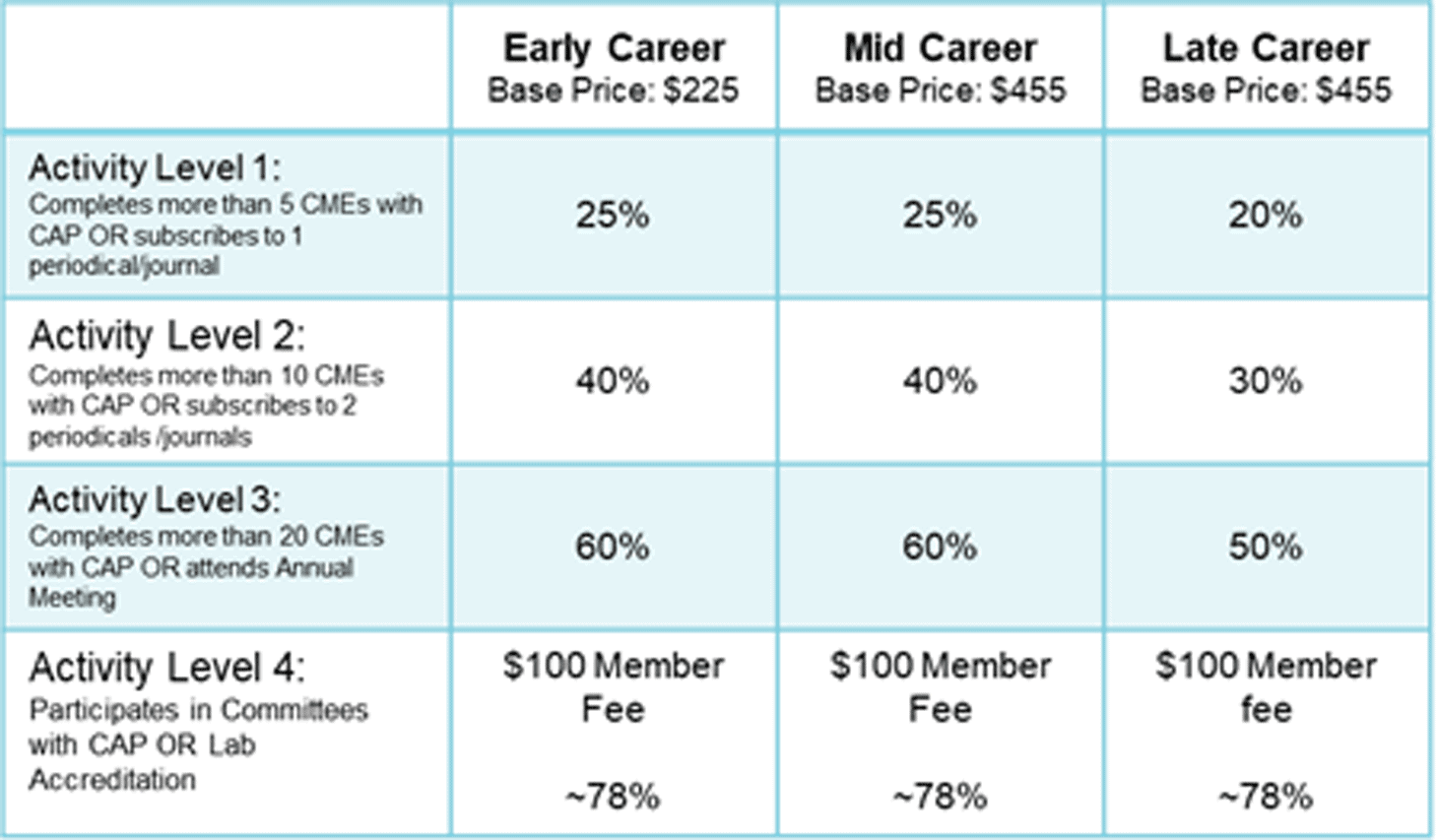 Marketing to members at different transition points in their careers is important. Many associations first engage students through educational institutions, in many cases with fees that are included in a student’s tuition, and so the student is automatically enrolled with the association at a discounted rate as part of their student package. Once the student graduates, there is in fact little direct engagement with the association and in most cases, the graduate is unaware of the benefits that membership could provide them. Some of these recent grads do re-enter associations a few years later as their chosen career path progresses, and they become aware of a conference, event, or the need to participate in professional development or training related to certification or licensing.
Marketing to members at different transition points in their careers is important. Many associations first engage students through educational institutions, in many cases with fees that are included in a student’s tuition, and so the student is automatically enrolled with the association at a discounted rate as part of their student package. Once the student graduates, there is in fact little direct engagement with the association and in most cases, the graduate is unaware of the benefits that membership could provide them. Some of these recent grads do re-enter associations a few years later as their chosen career path progresses, and they become aware of a conference, event, or the need to participate in professional development or training related to certification or licensing.
The most used pricing tactic of professional associations are discounts for students, recent grads, and retired members. Offering all members, the same level of service is a missed opportunity considering that the way each market segment uses their membership and perceives value in that membership is unique. Some will perceive they are getting a good deal; others will think they are paying for stuff they never use. Memberships are suffering from the same pressures as other renewal-like models – people are very aware of what use and are willing to pay for.
Associations can reaffirm their value and increase membership by aligning price with a value-based offer structure for each market segment. Doing so requires creating tailored membership options. Here’s how:
-
Define market segments
Professional associations are well versed in identifying segments of the market to chase for potential members. The segments we most often see are “Student, professional, and retired”. Often there will be differences within the professional segment based on years in practice or time since graduation. These marketing communications segments create large pools of potential candidates.
Often associations miss developing beyond discounts directed at those specific audiences and an understanding of levels of value within those segments. The key to successful offer/pricing segmentation is grouping similar customers using or buying similar services.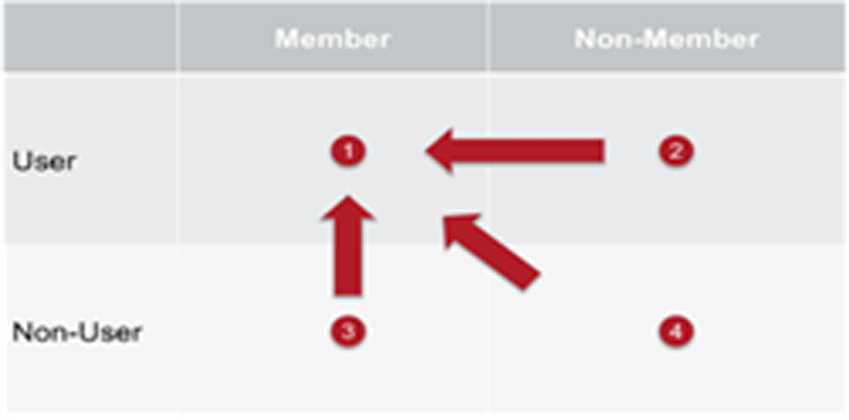
There are two primary ways of creating data-driven segmentation.
First, within the existing services, identify by members and non-members. Often associations will find non-members with higher activity than members, which leads to two very important questions:
- Why are actively engaged non-members not becoming members?
- Why are members not actively using more of the services?
Understanding these patterns opens the door of opportunity to successful bundling and tiering of offers.
The second way to create data-driven segmentation is to address more career-related needs. Some factors here include:
- Stage of career development
- Academic, industry, or practice environment
- Domestic or international location
Depending on the factor, the potential non-member and member goals change significantly as do their expectations or value for money.
Associations will find that an improvement in performance and growth will come from incentivizing people to move towards active membership and then adapting to their needs without losing them as members altogether.
Other key questions to ask include whether the person is:
- At the beginning, middle, or end of their career? At each point in their career members benefit from some services over others.
- A part of the industry, a related periphery industry, or an academic? This is important to define because some members may find value in the opportunity to stay abreast of industry news on a superficial or deeper level and some may find value in being published or a keynote speaker, while others may not.
- Based locally, regionally, nationally, or internationally?
- Paying for their fees or are their fees covered by their employer or another organization like a university?
-
Assess Value Drivers
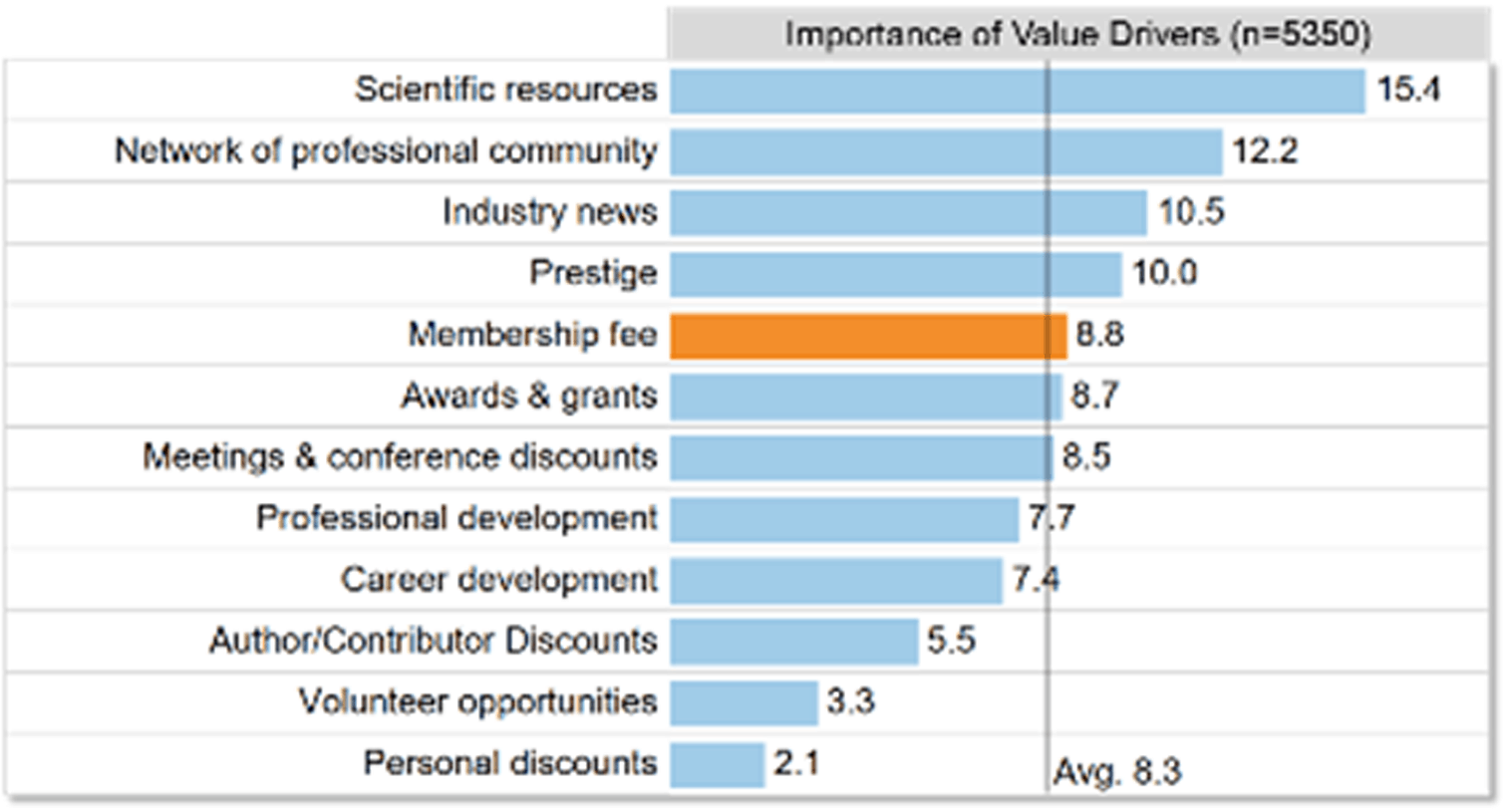 Once an association has defined its market segments, it is important to assess member value drivers for each segment (like achieving career goals). When that is understood, it’s easier to create offers to help members achieve those goals.
Once an association has defined its market segments, it is important to assess member value drivers for each segment (like achieving career goals). When that is understood, it’s easier to create offers to help members achieve those goals.
Our studies have found there are usually two or three core services that drive value and decision making and a long-tail list of offerings that are irrelevant. Most management teams are surprised by this because they invest heavily in delivering a long list of benefits and a minority of these actually drive core value. Once these core services are defined, an association can reprioritize resources and marketing to better invest in these core offerings.
-
Create Tiered Pricing Bundles
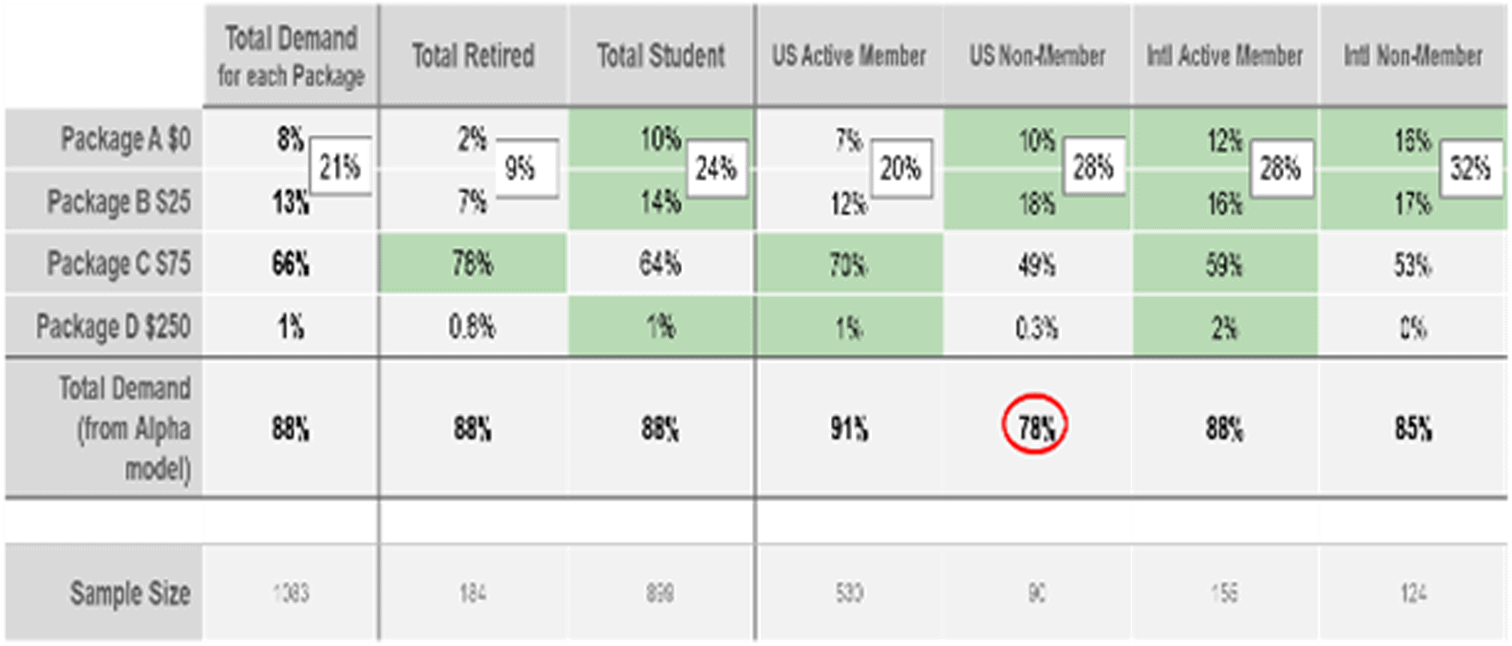 Once value drivers have been defined and products and services have been connected to those value drivers, pricing structure strategies and pricing bundles can be created. With tiered pricing, people can self-select which bundle works for them. The biggest fear among associations with this strategy is that everyone will choose the lowest priced bundle, but that’s not the reality, especially when you market effectively and can showcase the value offered.
Once value drivers have been defined and products and services have been connected to those value drivers, pricing structure strategies and pricing bundles can be created. With tiered pricing, people can self-select which bundle works for them. The biggest fear among associations with this strategy is that everyone will choose the lowest priced bundle, but that’s not the reality, especially when you market effectively and can showcase the value offered.
How can associations get people to spend more and buy into the larger value bundles? Metrics about trying to understand total spend within the association versus just the membership fee is not something most associations have ever looked at. We find it’s a different mindset than what they’re used to. They’ve been focused on offering just one fee rather than offering different choices at different fees.
-
Use Data
Aligning value with price is key to growing membership for associations. Our team presents different structures of membership and different access to benefits and services under different membership types, looking specifically at whether there is a need to change prices, remove services or structure the members in a different way to attract more members and grow revenue at the same time. Often, there are ways to attract specific market segments who are interested in a lower cost structure, and despite concerns, that offering doesn’t usually cause a shift in core membership fees.
For most associations, their biggest concern is seeing a shift down towards the lower membership fee without seeing an incremental gain in revenue. What we often find, and what is surprising to our clients, is that core membership does not shift. There is, however, often a gain in participation in the association by students, non-members who are on the periphery of the industry, and international members.
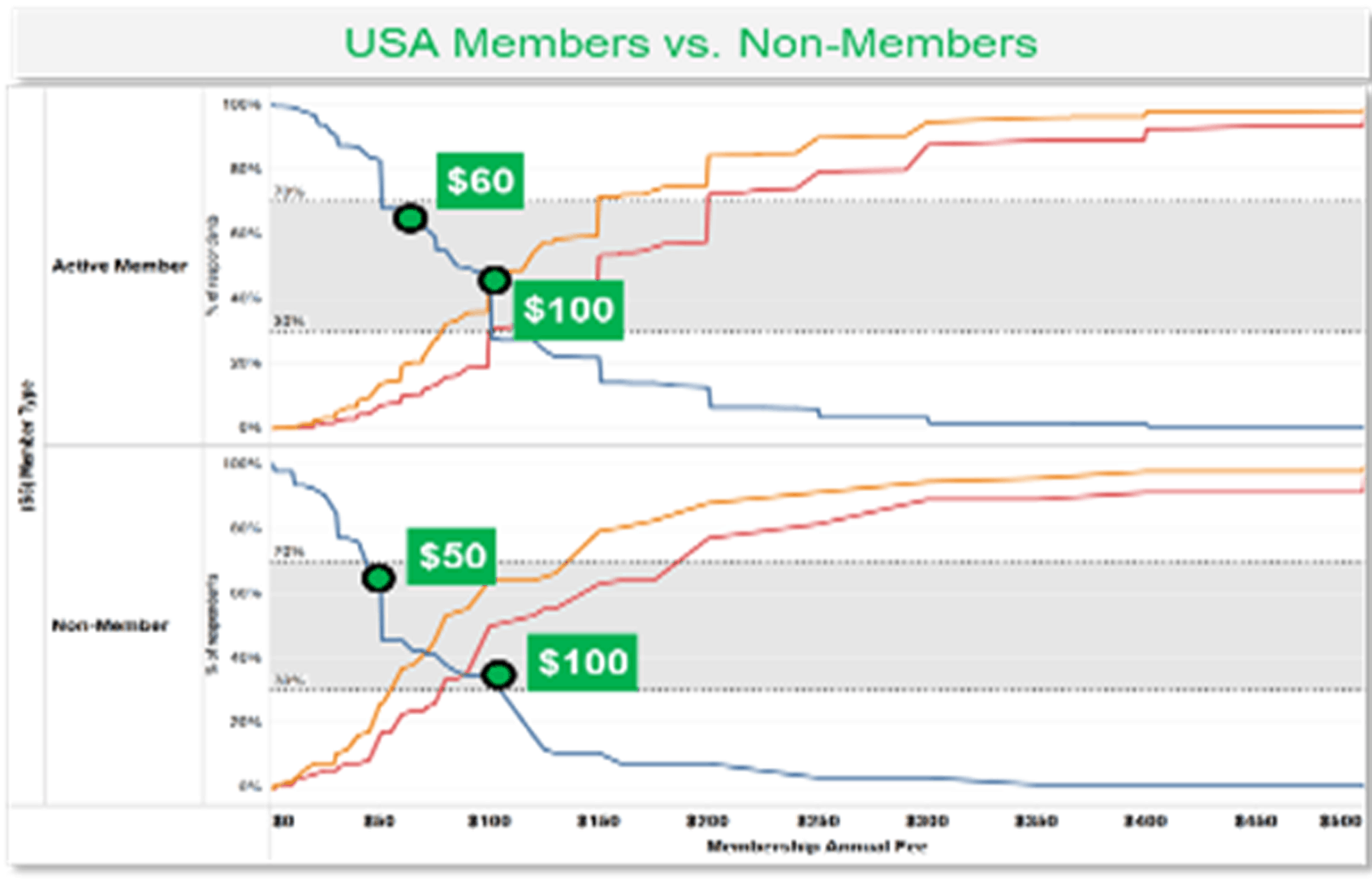 Looking at past membership data and conducting market research (including qualitative interviews with potential, existing, and past members) is an important step to gather the data needed for pricing analysis. Using this information, our team will analyze willingness to pay (WTP) and conduct a conjoint analysis ( the research behind tradeoffs). This information helps determine what people are and are not willing to pay for. Think of all the features a membership (which is essentially a subscription service) has. There’s often a lot of services, like discounts for home or car insurance that aren’t considered valuable by members. Using this data and analyses, our research team determines which services are most important to a member and identifies how much that member is willing to pay for the service relative to price.
Looking at past membership data and conducting market research (including qualitative interviews with potential, existing, and past members) is an important step to gather the data needed for pricing analysis. Using this information, our team will analyze willingness to pay (WTP) and conduct a conjoint analysis ( the research behind tradeoffs). This information helps determine what people are and are not willing to pay for. Think of all the features a membership (which is essentially a subscription service) has. There’s often a lot of services, like discounts for home or car insurance that aren’t considered valuable by members. Using this data and analyses, our research team determines which services are most important to a member and identifies how much that member is willing to pay for the service relative to price.
When it comes to showcasing value, the main take-a-ways for associations are to:
- Define market segments
- Assess value drivers and redistribute internal resources (like marketing) to improve and communicate these value drivers
- Align value with price
- Rethink offer structures and create bundled packages using conjoint analysis.
Iris Pricing Solutions works closely with associations across a variety of different industries to solve the challenges associated with declining membership and perceived relevancy. Connect with Kevin McCabe and Greg Thomas to learn more about how our team can benefit your association.





